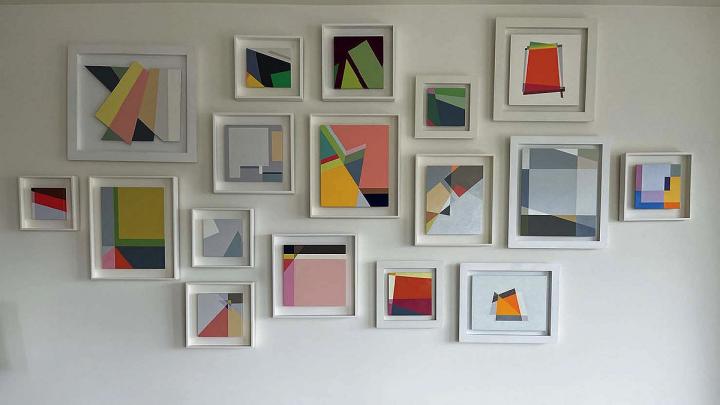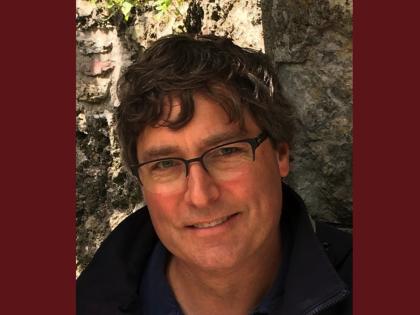“Sometimes I think I know where I’m going, but once you draw a line, you know, it tends to have a mind of its own,” says painter Judith Seligson ’72. She’s standing in the living room of her Manhattan apartment, looking at an installation of her work that hangs above the sofa: a carefully arranged group of geometric abstractions in oil paint—her signature style—with suggestive titles like “Do Less,” “Danger,” “Super-Fluidity,” and “Missing in Action.” The works span some 20 years of artistic endeavor, their odd angles and straight lines playing off each other from their separate framed canvases, with deep purples and greens and oranges softening into pale pinks and blues. “To me, each shape is like an individual in a community,” Seligson says. “They cohere to themselves, but they also interact.” Eventually, “the painting finds a place where this shape or that color can kind of break off like a piece of cake.” That’s when she knows something is complete.
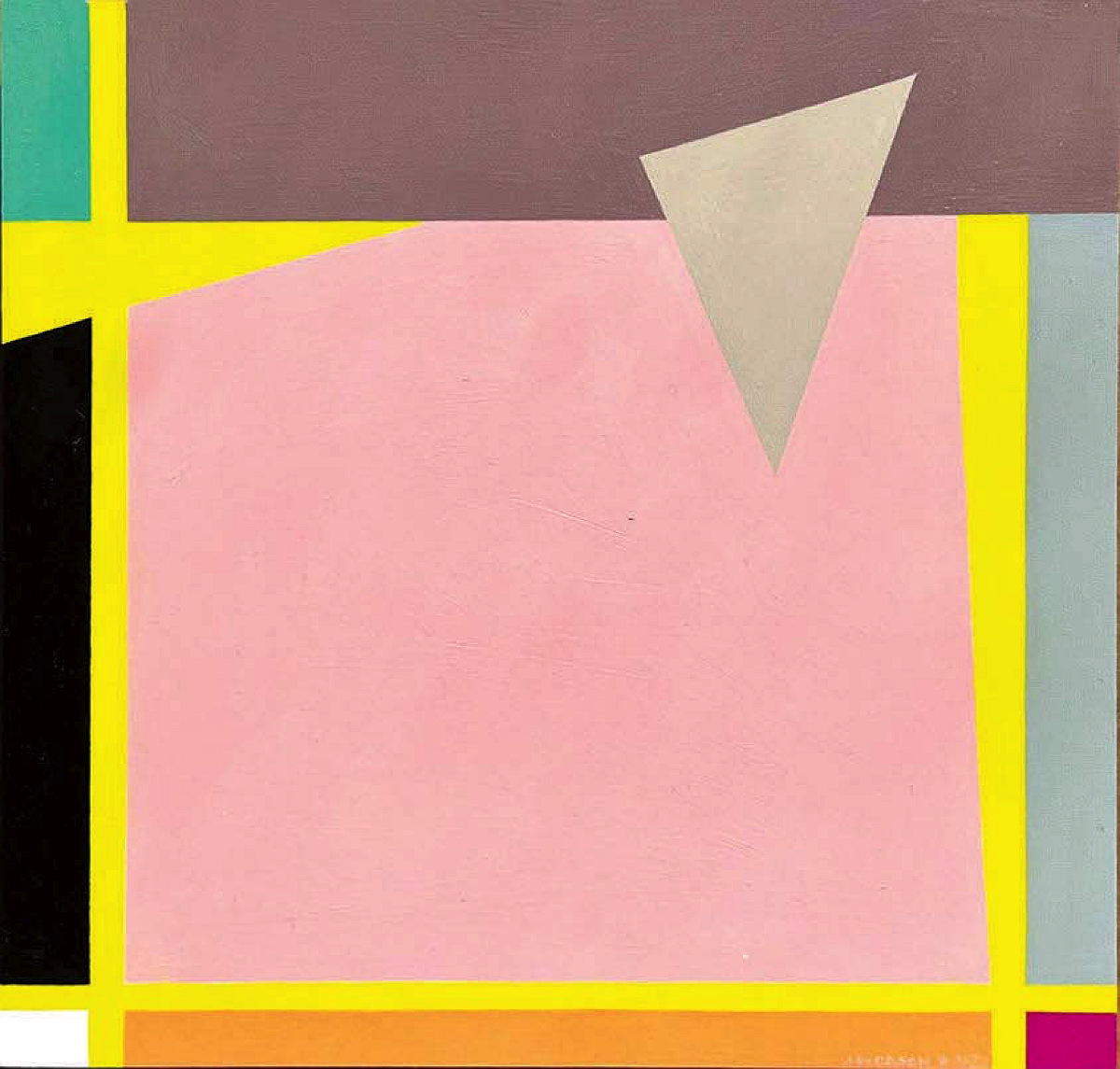
A painting titled “If Only”
Photograph courtesy of Judith Seligson
Seligson has been doing this work for more than 45 years. She and her husband, the architect Allan Greenberg, split their time between New York City and Alexandria, Virginia. Her garden and studio are in Alexandria (along with his firm’s headquarters), while the galleries where she shows her work are mostly in New York (as are her grandchildren, who live in an apartment just down the hall—Seligson keeps two tiny easels set up in her living room for four-year-old Leah and two-year-old Gabriel, and their artwork decorates the kitchen).
The Manhattan apartment is also a repository of Seligson’s artistic experimentation over the years: its walls are hung with three-dimensional paintings that look semi-sculptural even under glass, pigment prints rendered on a master digital printer, diminutive works on paper that measure three inches across (there’s a feminist statement in the way their smallness and intimacy demand attention, Seligson says), and an enormous, irregular-shaped painting that fills an entire hallway with blocks and wedges of color. From her “art closet,” Seligson pulls out other specimens. There’s a collection of graphite drawings, decades old, in which swirling, furious textural imagery intersperses quotes from Henry James’s Wings of the Dove with words and phrases from the Hebrew Bible. A mixed-media collage titled “It’s Time” combines recent geometric work with some of the looser, expressionistic landscapes she painted as a young artist in the 1970s, before she realized, as she says, that “there was something I wanted to say” in the playful mathematics and dramatic dynamism of geometry.
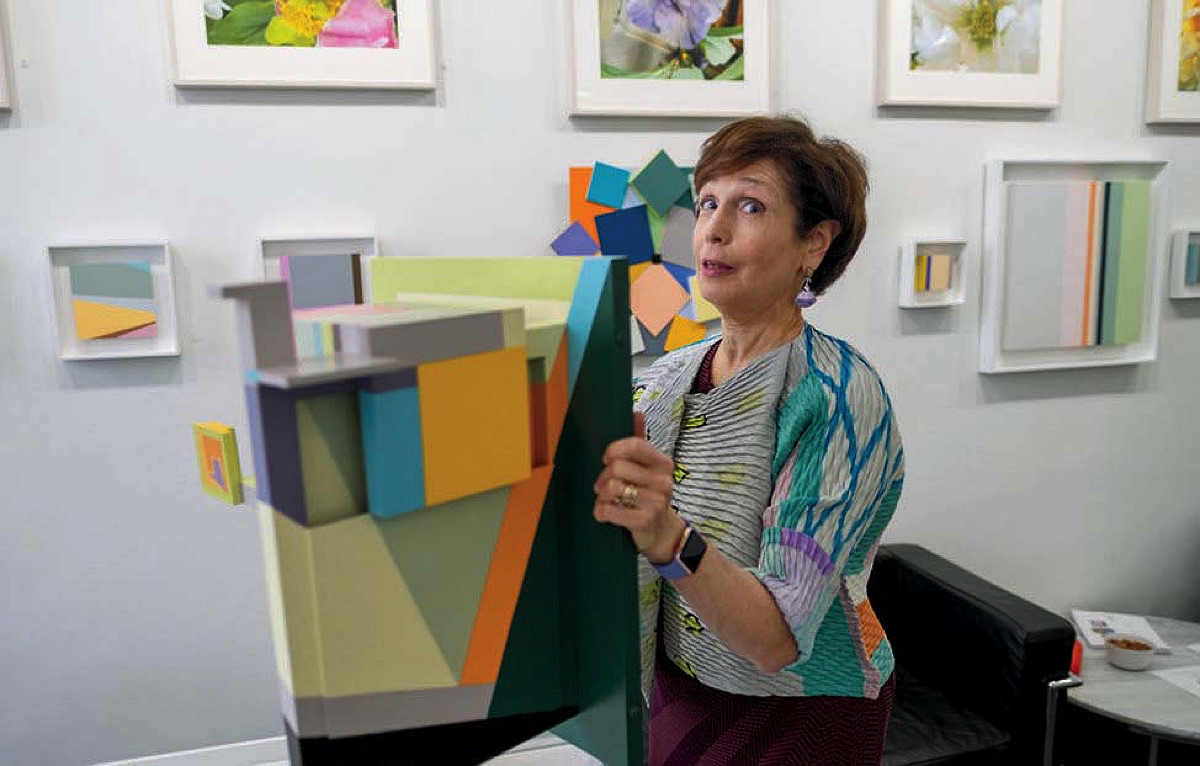
Seligson with her three-dimensional painting “The Three D’s”
Photograph courtesy of Judith Seligson
Seligson did not begin painting until college. She grew up in New Haven—her father, David Seligson, was founding director of Yale’s department of laboratory medicine, and her mother, Harriet Tutelman Seligson, was a chemist in the university’s clinical laboratories. Seligson arrived at Radcliffe as an economics concentrator, but the arts soon began to tug at her. She took a drawing class with a boyfriend in Louisiana, and then during a trip to Israel, learned batik—the technique for dyeing complex patterns onto cloth—from the mother of a family she knew there. That led her to a painting course at Harvard with abstract expressionist Flora Natapoff. And that changed everything: “I was kind of off and running then.” Natapoff, she says, used to call her a “bulldozer.” Seligson took it as a compliment. “She didn’t mean I was destructive; she meant I had some force that I was going to follow, and that maybe I didn’t hold back.”
After graduation, she found a studio in Somerville. In between producing architectural drawings and paintings of dead flowers, she studied Johannes Vermeer’s “lines of force” that lead the viewer’s eye, and Hans Hoffman’s theory on the “push and pull” of shape and color (reds push forward, blues push backward) that add dimension to the flat surface of a canvas. During the next few years, Seligson studied with artists Philip Guston, Leo Manso, and Victor Candell; she worked as a teaching assistant to Natapoff and took classes in her attic. She spent a pivotal few months in the artists’ haven of Provincetown during a 1975 scholarship, where she painted abstract landscapes on the beach, pinned between the ocean and the bay, “these two juxtaposing shapes—and the further you go out in this little town, the more you’re aware of them, and how they converge.”
Juxtaposition and convergence—push and pull, togetherness and separation: these ideas are central to Seligson’s artwork. They also inform the book she published last year, Gaps and the Creation of Ideas: An Artist’s Book, a labyrinthine collection of thoughts, quotations, and images that ties together visual art, literature, science, medicine, psychology, theology, and every other branch of knowledge. The book is impossible to summarize—750 pages long and 20 years in the making, it is constructed like an elaborate, ever-expanding mosaic—but its central idea is fundamental to her art: every juxtaposition creates both connection and disconnection, an existential breakage that she calls “the gap.” That’s “the great tool,” she says, of poets and artists, the key to learning and discovery and interpretation.
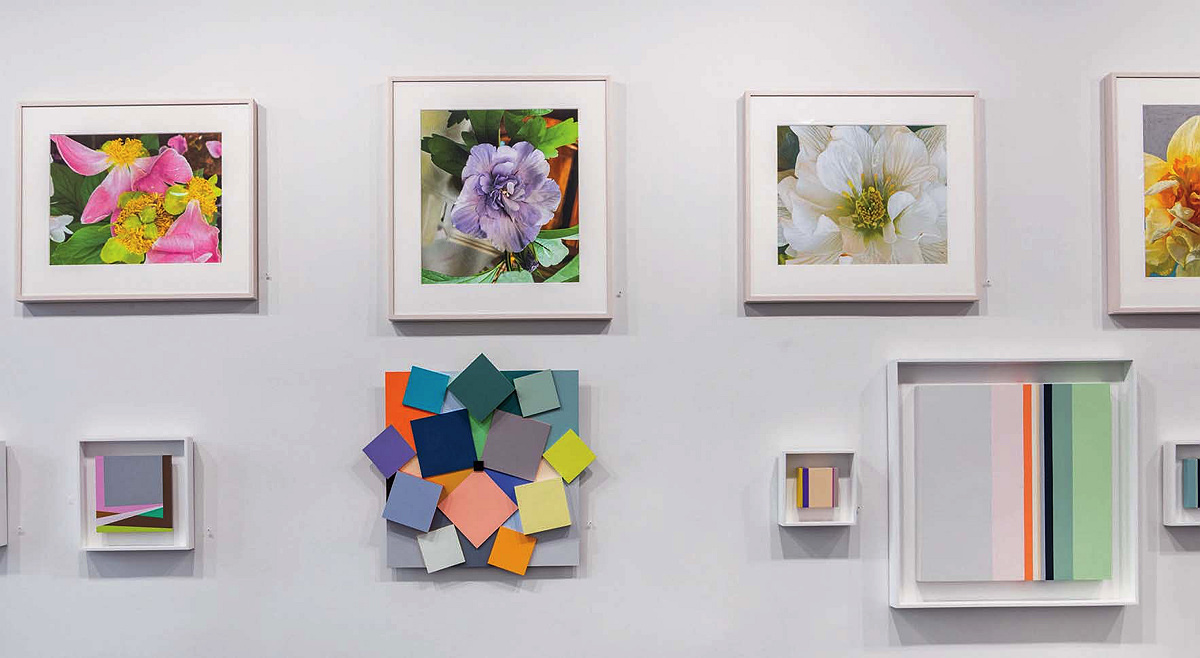
Seligson’s recent show at Galerie Mourlot in New York juxtaposed painted photographic prints of flowers with geometric abstracts.
Photograph courtesy of Judith Seligson
Seligson recently showed her paintings this past summer at Galerie Mourlot in Manhattan, in a solo exhibition called “The More You Look the More You See”—a title that could serve as an overall motto for her artwork. One segment of the show juxtaposed a series of geometric abstracts with large photographic prints of flowers from Seligson’s garden—daffodil, peony, lavender hibiscus—augmented with paint and colored pencil. The contrast between austerity and lusciousness is striking, but so are the correspondences: stripes of pink and blue (even gray) mirroring colors in the petals, a leaning triangle finding its echo in a wilting stem.
In another corner of the gallery, Seligson paired several lines from the poet John Donne, written out in a looping cursive, with nine small abstract paintings, each taking its title from a phrase of the famous poem: “No man is an island entire of itself; every man / is a piece of the continent, a part of the main; / … Any man’s death diminishes me, / because I am involved in mankind.” The longer one looked at the paintings hanging below those words, the clearer the convergences became: isolation, need, loss, community, uncertainty—they were all there, in blocks of color that never touched, jagged edges that stuck out like blades, tongue-and-groove closeness of purples and blues. The effect was surprisingly moving. “See,” Seligson says, “that’s the gap.”
